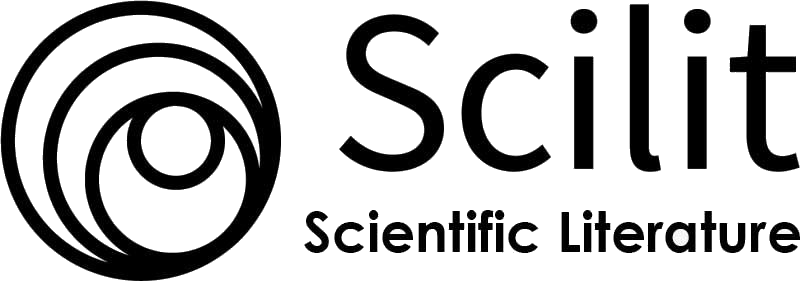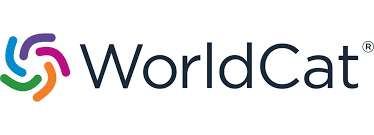Teacher’s Pedagogical Content Knowledge and Students’ Academic Performance in Circle Theorem
DOI:
https://doi.org/10.58425/jetm.v2i3.195Keywords:
Teacher pedagogical content knowledge, circle theorem, students’ performanceAbstract
Aim: The main purpose of this study was to investigate the impact of teacher's pedagogical content knowledge (TPCK) on students' academic performance in circle theorem.
Methods: The study used a mixed-methods research approach and a sequential explanatory design with a sample 210 students selected through the probability systematic sampling technique. The primary data was collected using questionnaire, an interview guide and a circle theorem achievement test. The data collected was analyzed using, the regression tool, and deductive manual thematic analysis, which was used for only the qualitative data collected from the interviews.
Results: The study found a significant relationship between the independent variable teacher’s pedagogical content knowledge and the dependent variable academic performance in circle theorem signifying that students’ performance in circles theorem depends on the pedagogical content knowledge of the teacher.
Conclusion: Based on the findings that emanated from the data analysed, the study concluded that teachers' pedagogical content knowledge has a significant relationship with students’ academic performance in circle theorem.
Recommendation: the study recommends that Ghana Education Service organise training conferences and workshops aimed at improving teachers’ pedagogical circle theorem content knowledge.
References
Aiym, Y., Galiya, K., Ademi, B., Adilet, M., Kamshat, Z., & Gulmira, K. (2022). Development of the logical thinking of future mathematics teachers through the use of digital educational technologies. Cypriot Journal of Educational Sciences, 17(6), 2001-2012. doi: 10.18844/cjes.v17i6.7548
Aji Wibawa, S. S., Haviluddin H. (2018). Using the CDIO framework to teach research methodology to informatics students. World Transactions on Engineering and Technology Education.
Alex, J. K., & Mammen, K. J. (2016). Lessons Learnt From Employing van Hiele Theory Based Instruction In Senior Secondary School Geometry Classrooms. EURASIA Journal of Mathematics, Science and Technology Education, 12(8). doi: 10.12973/eurasia.2016.1228a
Ansah, J. K., Quansah, F., & Nugba, R. M. (2020). ‘Mathematics Achievement in Crisis’: Modelling the Influence of Teacher Knowledge and Experience in Senior High Schools in Ghana. Open Education Studies, 2(1), 265-276. doi: 10.1515/edu-2020-0129
Armah, R. B., & Kissi, P. S. (2019). Use of the van Hiele Theory in Investigating Teaching Strategies used by College of Education Geometry Tutors. EURASIA Journal of Mathematics, Science and Technology Education, 15(4). doi: 10.29333/ejmste/103562
Artigue, M. (1999). The Teaching and Learning of Mathematics at the University Level Crucial Questions for Contemporary Research in Education. Notices of the American Mathematical Society.
Bryman, A. (2017). Social Research Methods
Bailey, M. (2013). The Direct and Indirect Paths Impacting Geometry Student Achievement.
Behling, F., Förtsch, C., & Neuhaus, B. J. (2022). The Refined Consensus Model of Pedagogical Content Knowledge (PCK): Detecting Filters between the Realms of PCK. Education Sciences, 12(9), 592. doi: 10.3390/educsci12090592
Bernard Fentim Darkwa, D. D. A. (2021). Developing Technology Pedagogical and Content Knowledge in Pre-Service Accounting Teachers with the Use of Audio-Visuals: A Ghanaian Perspective. Open Journal of Social Sciences,, 9 431-451. doi: 10.4236/jss.2021.97031
Bledsoe, C. (2010). Mathematics Teaching in the Middle School. National Council of Teachers of Mathematics, 15(8), 492-493.
Bos, B. (2008). Mathematical and Cognitive Fidelity, Technology Impacting Mathematical Achievement.
Bos, B. (2009). Virtual math objects with pedagogical, mathematical, and cognitive fidelity. Computers in Human Behavior, 25(2), 521-528. doi: 10.1016/j.chb.2008.11.002
Bosson-Amedenu, S. (2018). Pre-SHS Students’ Perception of Difficult Concepts in Junior High School Mathematics Curriculum in Ghana. Asian Research Journal of Mathematics, 3(2), 1-11. doi: 10.9734/arjom/2017/32329
Boyd, P., & Ash, A. (2018). Mastery mathematics: Changing teacher beliefs around in-class grouping and mindset. Teaching and Teacher Education, 75, 214-223. doi: 10.1016/j.tate.2018.06.016
Carlson, J., Daehler, K. R., Alonzo, A. C., Barendsen, E., Berry, A., Borowski, A., . . . Wilson, C. D. (2019). The Refined Consensus Model of Pedagogical Content Knowledge in Science Education. 77-94. doi: 10.1007/978-981-13-5898-2_2
Chand, S., Chaudhary, K., Prasad, A., & Chand, V. (2021). Perceived Causes of Students’ Poor Performance in Mathematics: A Case Study at Ba and Tavua Secondary Schools. Frontiers in Applied Mathematics and Statistics, 7. doi: 10.3389/fams.2021.614408
Dalbudak, İ., & Yiğit, Ş. (2021). Technology Use Attitudes of Teachers in the Field of Special Education. Propósitos y Representaciones, 9(SPE2). doi: 10.20511/pyr2021.v9nSPE2.1014
Emine Gül Çelebi-Ilhan, D. Ö.-V. (2022). Elementary Pre-service Mathematics Teachers’ Noticing Teaching Practices Based on TIMSS Video Study. International Consortium for Research in Science & Mathematics Education (ICRSME).
Emmanuel Iyamuremye, I. N., & Charles Magoba Muwonge. (2021). Influence of Teaching Approaches on Students’ Performance in Mathematics: A meta-analysis of Quasi-Experimental Studies in Africa. African Journal of Educational Studies in Mathematics and Sciences, 17 (2).
Funda Aydın-Güç, A. A. T. (2021). An investigation of the noticing skills of mathematics teachers to their students' misconceptions in written responses. International Journal of Curriculum and Instruction, 13(2), 1309-1323.
Ghana statistical Service (GSS), Ghana Health Service (GHS), (2014). Demographic and Health Survey. Rockville, Maryland, USA: GSS, GHS and ICF International.
Kalioldanovna, Y. G., Roza, N., Аrzanbayeva, B., Roza, L., Azimkhan, Y., & Omarov, N. (2022). Training of primary school teachers in the use of information technology. World Journal on Educational Technology: Current Issues, 14(3), 963-975. doi: 10.18844/wjet.v14i3.7329
Krejcie, R.V., & Morgan, D.W., (1970). Determining Sample Size for Research Activities. Educational and Psychological Measurement. Retrieved from www.kenpro.org/sample-size-determination-using-krejcie-and-morgan-table on 20th May, 2023
Laborde, C. (2006). The Hidden Role of Diagrams in Students' Construction of Meaning in Geometry.
Mailizar, M., & Fan, L. (2020). Secondary School Mathematics Teachers’ Instructional Practices in the Integration of Mathematics Analysis Software (MAS). International Electronic Journal of Mathematics Education, 16(1), em0618. doi: 10.29333/iejme/9293
Meier, S. (2021). An Investigation of the Pedagogical Content Knowledge across German Preservice (Physical Education) Teachers. Advances in Physical Education, 11(03), 340-352. doi: 10.4236/ape.2021.113029
Mohan Chinnappan, M. B. E. a. C. B. (2011). Knowledge use in the Construction of Geometry
Nel, C. (2012). Cracking the Vocabulary Code in Mathematics in the Foundation Phase.
Robin Averill, D. A., and Michael Drake. (2015). Developing Culturally Responsive Teaching through Professional Noticing within Teacher Educator Modelling. Mathematics Teacher Education and Development, 17(2), 64 - 83.
Shanley, L., Strand Cary, M., Turtura, J., Clarke, B., Sutherland, M., & Pilger, M. (2019). Individualized Instructional Delivery Options: Adapting Technology-Based Interventions for Students With Attention Difficulties. Journal of Special Education Technology, 35(3), 119-132. doi: 10.1177/0162643419852929
Sharafeeva, L. (2022). The Study of Teaching Staff Motivation to Use Mobile Technologies in Teaching Mathematics. International Journal of Education in Mathematics, Science and Technology, 10(3), 604-617. doi: 10.46328/ijemst.2364
Sumara, B. D. a. D. (1998). Constructivist Discourses and the Field of Education: Problems and Possibilities.
Sumaya Laher, A. F. a. S. K. (2012). Transforming Research Methods in the Social Sciences: Case studies from South Africa.
Thaanyane, M. E. (2021). Procedural Issues in a Mixed Methods Research: A Phenomenological Study of a Doctoral Student in Lesotho. doi: 10.47001/irjiet/2021.506017
WAEC. (2011). The Chief Examiners for Mathematics (Core) and Mathematics (Elective) report
WAEC. (2012). The Chief Examiners for Mathematics (Core) and Mathematics (Elective) report.
WAEC. (2013). The Chief Examiners for Mathematics (Core) and Mathematics (Elective) report
WAEC. (2014). The Chief Examiners for Mathematics (Core) and Mathematics (Elective) report
WAEC. (2015). The Chief Examiners for Mathematics (Core) and Mathematics (Elective) report
WAEC. (2016). The Chief Examiners for Mathematics (Core) and Mathematics (Elective) report
WAEC. (2018). The Chief Examiners for Mathematics (Core) and Mathematics (Elective) report
WAEC. (2020). The Chief Examiners for Mathematics (Core) and Mathematics (Elective) report.
WAEC. (2005). The Chief Examiners for Mathematics (Core) and Mathematics (Elective) final report
Wang, Q., & Xue, M. (2022). The implications of expectancy-value theory of motivation in language education. Front Psychol, 13, 992372. doi: 10.3389/fpsyg.2022.992372
Wiafe, M. A., Ayensu, J., & Yeboah, G. B. (2023). Predictors of food variety and food consumption scores of adolescents living in a rural district in Ghana. PLoS One, 18(5), e0286477. doi: 10.1371/journal.pone.0286477
Yalley, E., Armah, G., Ansah, R. K., & Palou, E. (2021). Effect of the VAN Hiele Instructional Model on Students’ Achievement in Geometry. Education Research International, 2021, 1-10. doi: 10.1155/2021/6993668
Zan, R., & Di Martino, P. (2014). Students’ Attitude in Mathematics Education. 572-577. doi: 10.1007/978-94-007-4978-8_146
Zeng, Y. (2022). Analysing Teacher Knowledge for Technology Use among Secondary Teachers Teaching Chinese as a Foreign Language (CFL) in Australia. Journal of Curriculum and Teaching, 11(2), 15. doi: 10.5430/jct.v11n2p15
Downloads
Published
How to Cite
Issue
Section
License
Copyright (c) 2023 Journal of Education and Teaching Methods

This work is licensed under a Creative Commons Attribution 4.0 International License.
The authors retain the copyright and grant this journal right of first publication. This license allows other people to freely share and adapt the work but must give appropriate credit, provide a link to the license, and indicate if changes were made. They may do so in any reasonable manner, but not in any way that suggests the licensor endorses them or their use.










